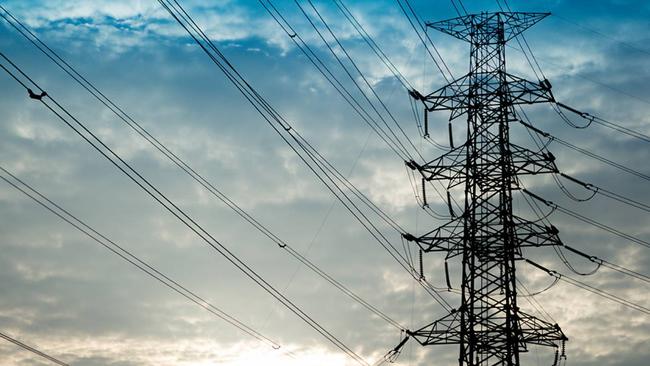The Coalition’s nuclear plan depends on many bold assumptions

First a stocktake. Australia’s electricity sector has made much progress towards net zero. Sector emissions have fallen by 22 per cent since 2005, albeit stalling over the past five years. Issues mostly out of the control of Australian governments led to household price increases of around 30 per cent across 2022-23 before moderating this year. Prices are now about where they were in real terms in 2019. Major blackouts have been avoided, but the system seems frequently close to the edge on reliability.
Aligning closure of coal-fired power stations with new energy resources – renewable generation, transmission, storage, and gas for backup – was never going to be easy.
Federal government actions, such as underwriting renewables to boost their growth and commissioning a review of the National Electricity Market’s design, are part of getting this right. Labor remains embarrassed by its failure to meet the power bill reduction it promised in 2022.
The Coalition says that nuclear should play a material role and would deliver cheaper, cleaner and more consistent power.
It proposes to build seven nuclear power plants, delivered from 2035, with a total capacity of 14 gigawatts, projected to supply 38 per cent of electricity in 2050. Coal plants would operate until the nuclear plants are available, and renewables’ share of the system would be lower, with correspondingly fewer transmission lines.
The first and foremost task is to compare the total cost of the respective plans to deliver electricity to support our economy to 2050 when net-zero emissions is the shared goal. Modelling by Frontier Economics claims the total cost of the Coalition’s plan would be $263bn less than the total cost of Labor’s policy, that it would be just as reliable and would reach near-zero emissions by 2050.
But when such promises are unpicked, concerns arise.
First, much of the difference comes from comparing different scenarios. The critical difference lies in assumptions about the rate of economic growth.
The Labor-preferred scenario includes strong economic growth and uptake of rooftop solar and electric cars between now and 2050. The Coalition scenario is more pessimistic, assuming more challenging economic conditions and lower electricity demand.
Comparing these two scenarios is misleading. Both plans should be tested against the same economic growth scenarios, in which case the savings from nuclear fall by as much as $150bn.
In any case, future governments would not be slavishly following any one scenario all the way to 2050. They would be adjusting to real-world circumstances as they unfold.
Both scenarios are only as useful as their underlying assumptions. While both use similar estimates of the capital cost of nuclear plants, the big difference is that Frontier has assumed nuclear plants would run 90 per cent of the time, while CSIRO has used a range of 54-89 per cent, more akin to what coal currently achieves. New plants can achieve high capacity. But assuming 90 per cent for a fleet of seven plants over a multi-decade lifetime looks overly optimistic.
In addition, expecting that seven new nuclear plants with an average cost of $20bn and capacity of 2GW could be developed and commissioned from scratch in Australia runs counter to all our lived experience of building infrastructure.
In the meantime, the Coalition proposes to slow investment in renewables and keep ageing and increasingly unreliable coal plants running longer – further risks to costs and reliability.
Finally, there are risks that the market design may not support 90 per cent nuclear capacity. For example, the current market operates with 40 per cent renewables and 46 per cent coal. That market leads to volatile wholesale prices and financial pressure on the less flexible plants, mainly coal. Without major market design changes, it is hard to see how such pressure would be avoided with 54 per cent renewables and 38 per cent nuclear. The popularity of household solar in unlikely to drop, and that would mean nuclear power runs for less of the time or solar is deliberately blocked.
Most critically, the nuclear plan would mean an additional 750 million tonnes or more of greenhouse gas over the next 25 years. Those gases would cause environmental harm. And at a practical level, a slower transition risks more expensive motor vehicles and our capacity to attract investment capital in strategic growth areas.
The Coalition’s plan depends on multiple bold assumptions. It risks not meeting emissions targets, higher costs than estimated, and reliability threats as ageing coal becomes less reliable. It creates material uncertainty for investors and makes no impact on the immediate cost-of-living issue. The case to switch has not been made.
Plan A is work in progress, neither easy nor cheap. Adjusting as we progress might involve the same mix, just a little slower and messier. Neither rules out a future role for small modular nuclear reactors if they become a commercial reality in the late 2030s or 2040s. Australia should position itself to be a fast adopter in such circumstances.
But in the meantime, we should not be for turning.
Tony Wood is director of the Grattan Institute’s Energy and Climate Change program.






Australians have a choice to consider at the next election: to stay the course to net-zero emissions on a mostly renewables pathway or to invite a nuclear partner on the journey, with promises of a cheaper and smoother ride. That is the choice. But how to decide?